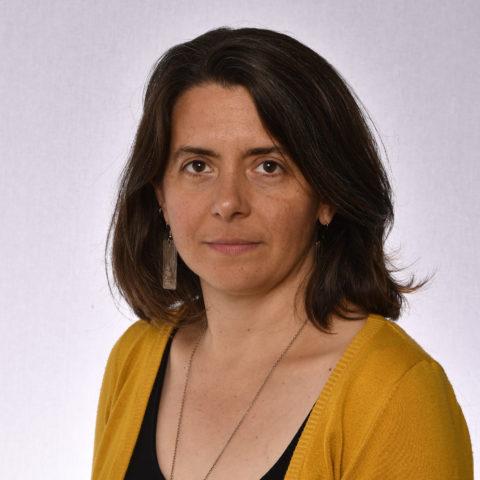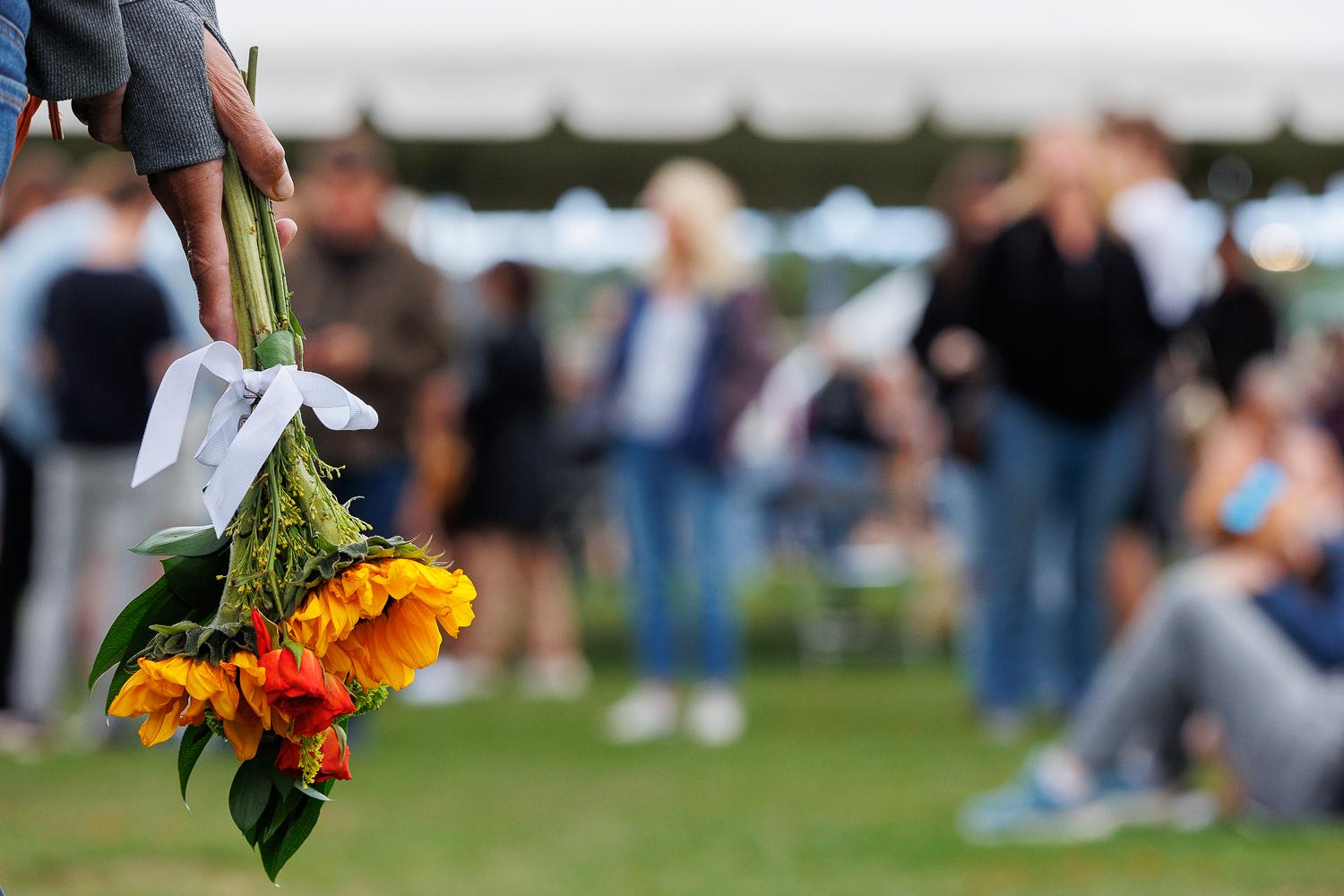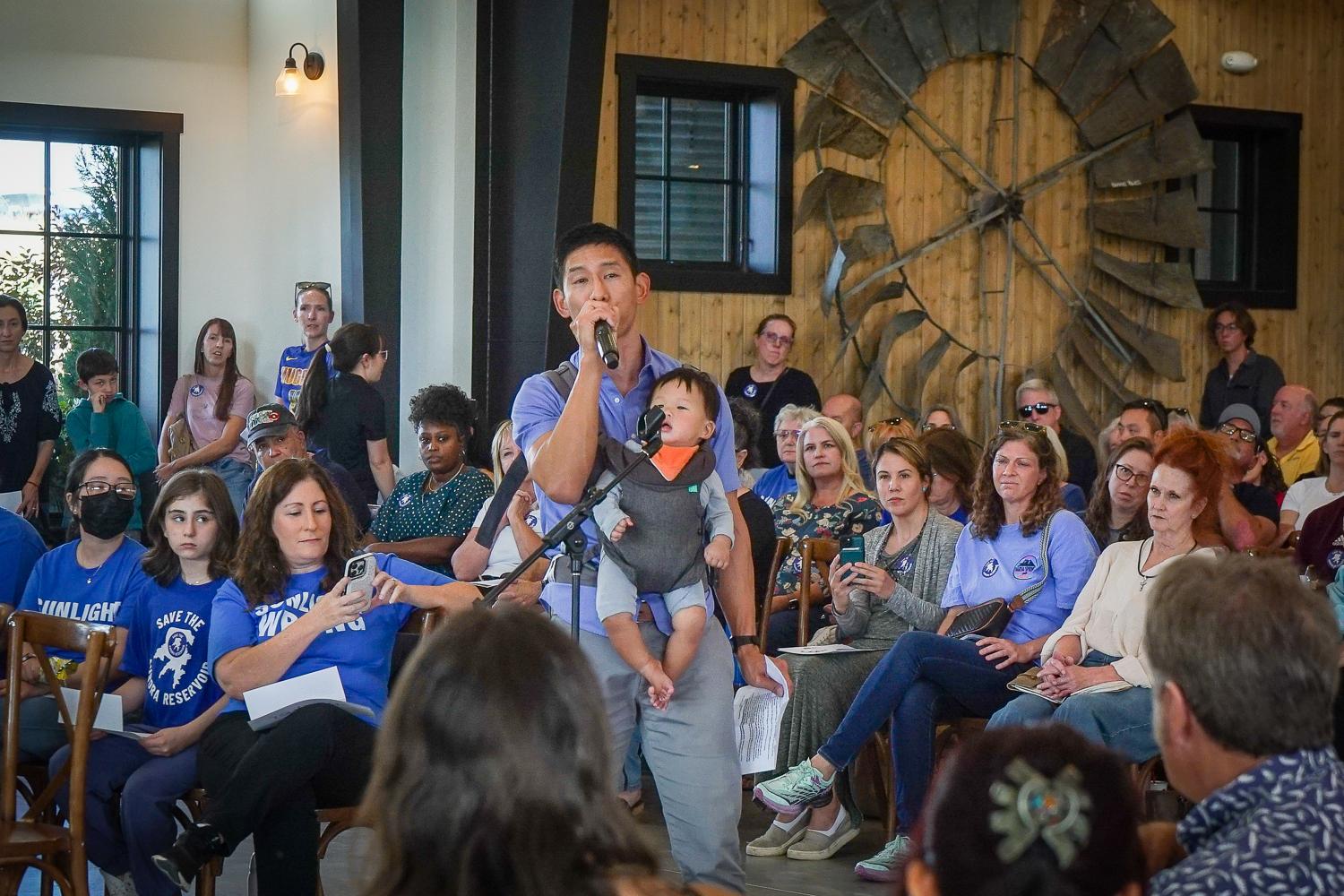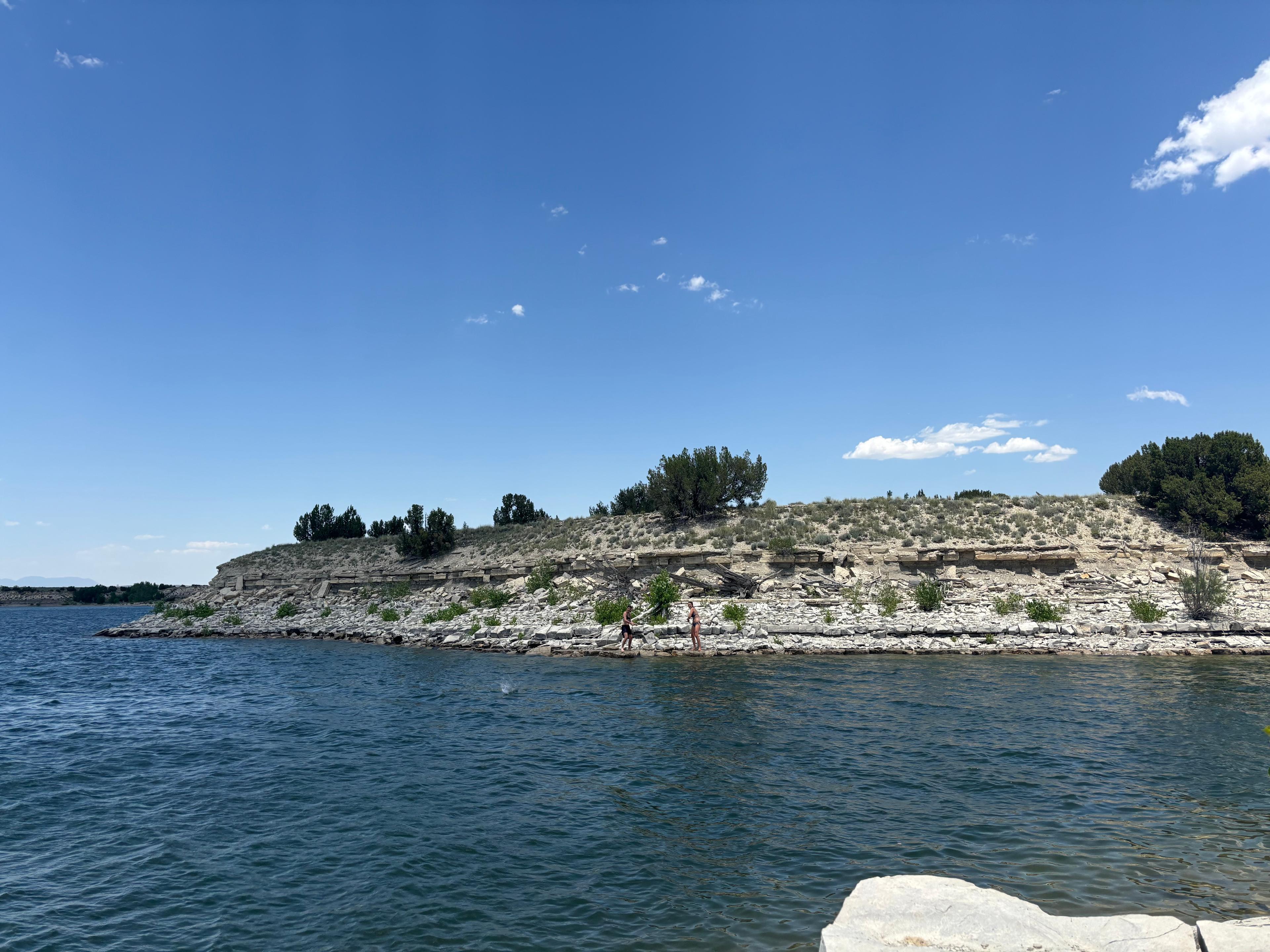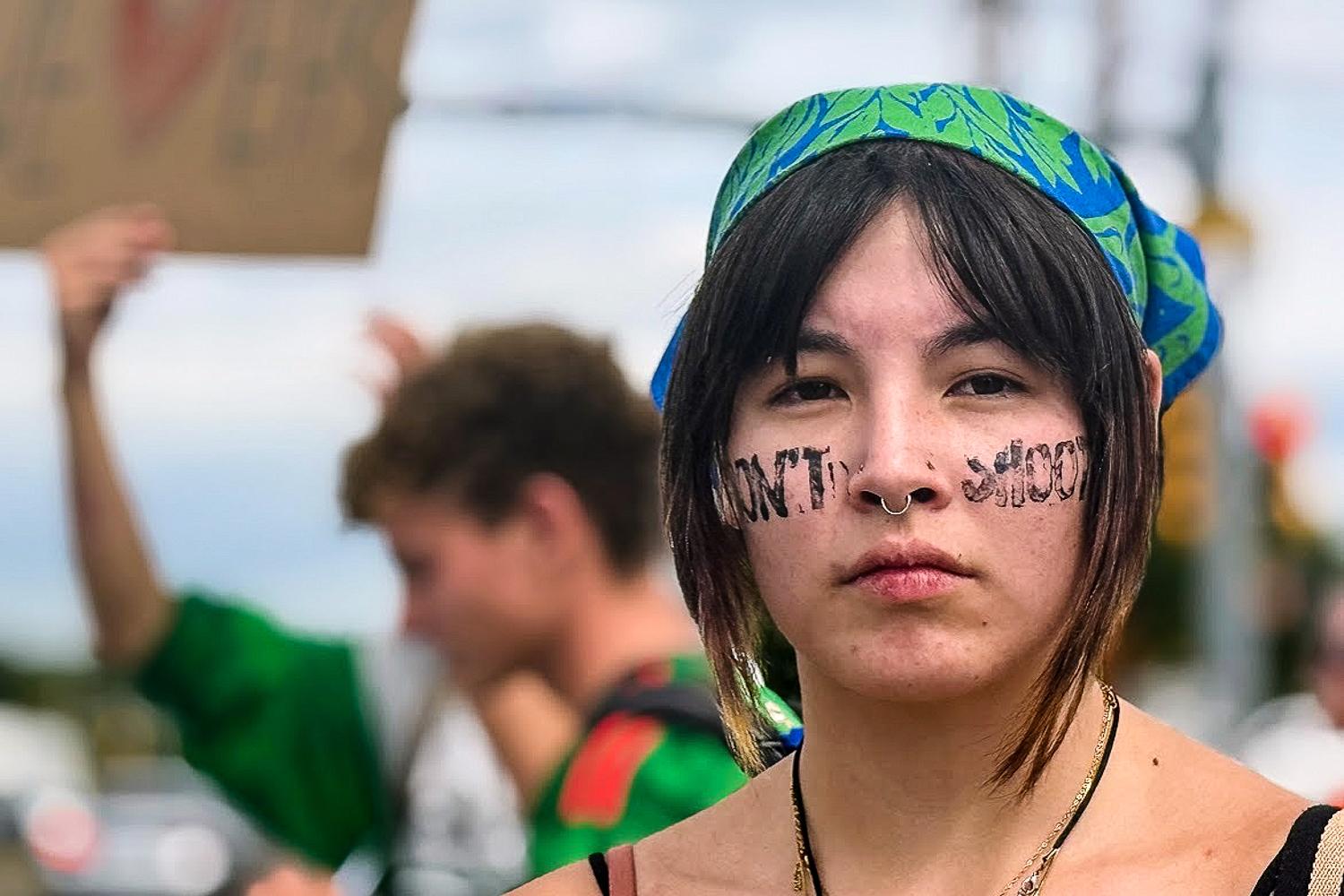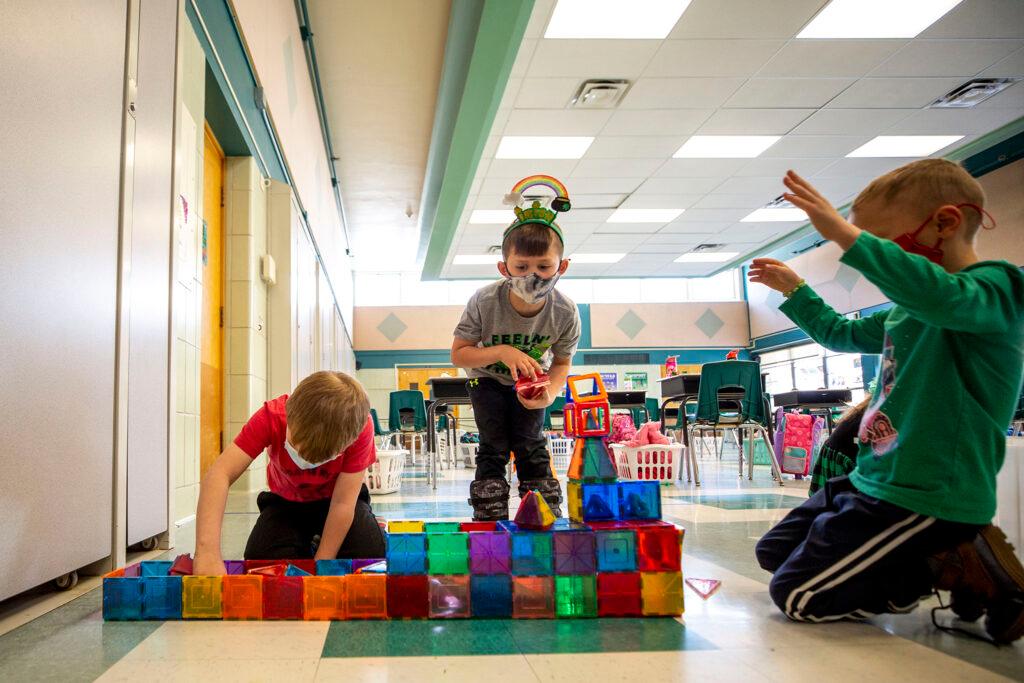
This story was originally published by Chalkbeat, a nonprofit news organization covering public education. Sign up for their newsletters here.
When students returned to school in the Greeley-Evans district north of Denver, masks were recommended — but not required — for unvaccinated students and staff.
That made the district typical in Colorado, where the state neither banned mask mandates nor issued its own requirement. Instead, the state left the decision up to local school districts and public health agencies, most of which in turn left the decision up to individuals.
“I was hopeful,” said Terri Pappas, a Greeley-Evans school board member, about the start of the school year. “We were imploring our school community to wear masks. It became pretty evident that wasn’t happening.”
Cases rose — and so did quarantines. “We were having a big impact on our families,” Pappas said. “We have a lot of families who work and cannot pivot to remote learning very easily.”
A month into the school year, Greeley-Evans is one of a growing number of Colorado districts operating under a mask mandate, either because the school district itself adopted one or a county health department imposed one. At least 78 percent of Colorado students in preschool through 12th grade now attend school under a mask mandate, including most students in 25 of the state’s 30 largest districts.
Decisions to put mask mandates in place came after a rapid rise in COVID cases among school-aged children, who currently have the highest rates of transmission in the state. School outbreaks doubled and then doubled again in the first weeks of the school year, and hundreds of students have been sent home to quarantine and learn remotely.
But Colorado’s quarantine rules allow masked students to stay in school in many situations even if they have close exposure to someone with COVID.
“Our goal to start the school year was to have as ‘normal’ of a start as possible,” Superintendent Kevin Duren of the Widefield district in Colorado Springs wrote in a letter to families earlier this month. “Unfortunately, hundreds of our students were not able to experience normal. In light of the uptick in positive cases and quarantines, we believe adding an additional layer of mitigation is appropriate at this time.”
Widefield’s mask mandate is temporary, though, a four-week attempt to get control of the situation in hopes more members of the community get vaccinated. Many other districts, especially in more conservative parts of the state, don’t require masks.
“There is frustration at the risk we’ve run with kids’ health, but I’m also encouraged that districts are reacting to these outbreaks and changing course,” said Erica Manoatl, manager of research initiatives for the Colorado Children’s Campaign.
The Children’s Campaign has called for children to go to school in person with COVID safety measures in place.
“Masks are an evidence-based way to reduce the spread of COVID, but it’s really important that everyone wear one for them to be the most effective,” Manoatl said. “If it’s only recommended, not everyone will do it.”
Since late July, the Colorado Department of Public Health and Environment, in accordance with federal guidance, has recommended that everyone in school settings wear a mask regardless of vaccination status. Some districts adopted that guidance as policy before the start of the school year, including Denver Public Schools, the state’s largest district, and working-class suburban districts like Westminster and Sheridan.
Others required masks for younger students who were not eligible for vaccination, required masks for unvaccinated staff, or simply recommended masks for people who were not vaccinated.
Seeing this patchwork approach, some county health departments stepped in with public health orders requiring masks in schools.
The Jefferson County Health Department overrode administrators in the state’s second-largest district on the day before school was to start and ordered all students and staff to wear masks. The following day, the Tri-County Board of Health voted to order all students under 12 and all staff who work with them to wear masks. Tri-County Health Department oversees 15 school districts in Adams, Arapahoe, and Douglas counties.
The vote caused a political uproar, with county commissioners moving to opt out of the order even as some school districts said they would follow it regardless. On Aug. 30, the Tri-County Board of Health met again to revoke the opt-out provision and expand the mask order to cover all students and staff, with Health Director John Douglas pointing to the steep increase in cases among children and the resulting quarantines.
The mask mandate could lead to the dissolution of Tri-County Health, with the member counties discussing forming their own independent health agencies, but for now its mask requirements cover more than 250,000 students in Cherry Creek School District, Aurora Public Schools, Douglas County School District, Littleton Public Schools, Brighton-based 27J, and more.
In southern Colorado, the Pueblo County Health Department also imposed a mask mandate on the city and the county school district shortly after the start of the school year.
“We know that we’ve had a significant rise in cases in all age groups,” Dr. Chris Urbina, medical director of the Pueblo Department of Public Health and Environment, told the Board of Health, according to the Chieftain. “It’s about freedom to be free from infection. I think it’s clear that our voluntary recommendation did not work.
“Schools made it optional, and kids aren’t wearing them.”
In other communities, the county health department took a more hands-off approach, but school districts themselves moved to adopt mask mandates. In conservative Weld County, the Greeley-Evans school board voted in late August to require masks for students and staff through eighth grade, and the Weld Re-4 voted last week to require masks for all students and staff.
In El Paso County, Cheyenne Mountain and Manitou Springs started the school year with mask requirements, the latter due to a city order. District 11, Widefield, and Harrison adopted mask mandates after experiencing outbreaks and quarantines, even as other districts such as Academy 20 and District 49 continue to leave it up to families. A spokeswoman for the El Paso County Health Department told the Colorado Springs Gazette there are no plans to issue a public health order requiring masks.
On Friday, the Colorado Department of Public Health and Environment strengthened the wording of its school guidance, calling on districts themselves to impose mask mandates, without actually requiring them to do so. It’s not clear yet whether more districts will heed the advice.
Gov. Jared Polis has repeatedly defended a local control approach, describing it as empowering superintendents to make the best decisions for their communities. He said he would only consider a state mandate if too many schools were switching to remote learning or hospital capacity was threatened, a very high bar for enacting policy changes.
“Many school districts have implemented mask requirements,” he said at a press conference Friday. “Certainly the majority of students in our state are wearing masks every day.”
The decisions have been controversial in many communities and prompted parent protests, student walkouts, and even arrests.
Most of the people who spoke at school board meetings in Greeley opposed the mask mandate, and Pappas said she listened to their concerns. But the public comment from the meetings didn’t represent the full range of views in the community.
“Privately, in emails and phone calls, there was the same number if not more asking us to put a mask mandate in place,” she said. “Personally, I heard more people saying, ‘Thank you so much. We know it was a hard decision, but it was the right one.’”
The Aurora Sentinel, through COLab, the Colorado News Collaborative, helped track school district mask policy changes.
Chalkbeat is a nonprofit news site covering educational change in public schools.
